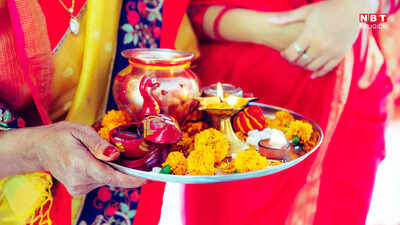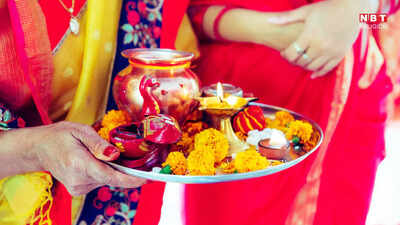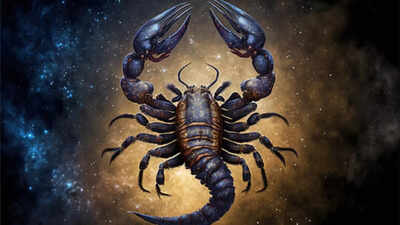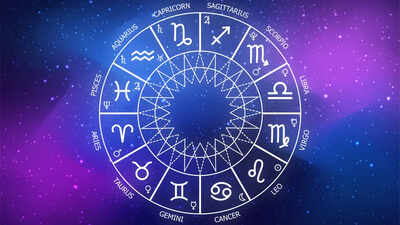Ahoi Ashtami 2025: Date, Puja Muhurat & Remedies For Wellbeing of Children

Ahoi Ashtami is one of the most meaningful fasts observed by Hindu mothers for the well-being and longevity of their children. It’s a day that blends devotion, discipline, and deep maternal love — where faith becomes an expression of protection. In 2025, Ahoi Ashtami will be observed on Monday, October 13, marking an important date in the Hindu calendar during the Krishna Paksha (waning phase of the moon) in the month of Kartik. According to the Panchang, the Ahoi Ashtami Puja Muhurat in 2025 will be from 5:53 PM to 7:08 PM, lasting 1 hour and 15 minutes. The time for sighting stars (Sanjh) is 6:17 PM, while the moonrise on Krishna Dashami will occur at 11:20 PM. Devotees also mark Govardhan and Radha Kunda Snan on the same day, which is considered a spiritually cleansing ritual for those observing the fast.
The Significance of Ahoi Ashtami
The festival’s origin lies in a poignant story that captures the spirit of repentance and divine forgiveness. According to legend, a woman once went to dig soil to renovate her home and accidentally killed a lion cub. Soon after, her seven sons disappeared. Heartbroken, she prayed to Goddess Ahoi — a form of Goddess Parvati — and observed a fast with complete devotion. Moved by her sincerity, the goddess restored her sons, symbolising the triumph of faith, humility, and maternal love. From then on, women began to observe Ahoi Ashtami every year, praying for their children’s safety and long life. Traditionally, this fast was kept by mothers of sons, but today, many women observe it for all their children, regardless of gender. The festival represents a mother’s prayer for her family’s happiness and her children’s protection from life’s hardships. Ahoi Mata is believed to watch over children as a divine guardian. The fast, rituals, and prayers together express gratitude for motherhood while invoking the goddess’s blessings for the next generation.
How to Observe the Ahoi Ashtami Vrat
The observance of Ahoi Ashtami begins before sunrise. Women wake up early, take a holy bath, and make a Sankalp — a vow to keep the fast for the safety of their children. The day is spent in devotion and restraint. Many women abstain from food and water until the evening puja, while others may consume fruits or milk, depending on family traditions. As evening approaches, devotees prepare for the Ahoi Mata Puja during the auspicious Muhurat. The image of Goddess Ahoi is either drawn on the wall using red ochre (geru) or placed as a printed picture. The drawing usually depicts a face with small cubs, symbolising fertility and motherhood. An earthen pot filled with water, decorated with vermillion and sacred grass, is placed near the image along with offerings such as rice, roli, diyas, and sweets. During the puja, women recite the Ahoi Ashtami Vrat Katha, narrating the story of the mother who regained her sons through prayer. They offer prayers, light a lamp, and seek forgiveness for any unintentional mistakes that might harm their children. Eight puris, eight pua (sweet fritters), and halwa are often offered as bhog, symbolising the sacred number associated with Ashtami. After sunset, when the stars appear in the sky around 6:17 PM, women offer water (Arghya) to them before breaking their fast. In some traditions, the fast is broken after moonrise at 11:20 PM. The act of offering water to the stars holds deep significance — the twinkling stars are seen as representations of children and divine protectors watching over them.
Remedies and Traditional Upayas for Children’s Wellbeing
Alongside fasting and prayer, Ahoi Ashtami is associated with several traditional remedies or upayas believed to attract divine blessings for children. These are simple, symbolic acts rooted in centuries of faith and experience. One of the most common practices is to offer Shringar items to Goddess Ahoi — such as bangles, bindis, or mirrors — as a gesture of devotion. It is said that these feminine offerings please the goddess and invoke her nurturing energy. Many devotees also chant mantras dedicated to Goddess Parvati or Ahoi Mata throughout the day. A simple prayer, said with pure intention, is believed to strengthen the effect of the fast. Some families feed cows or offer food to girls (Kanya Pujan) as an act of charity, symbolising the goddess’s blessings reaching their own children. Charity, or daan, is another integral part of Ahoi Ashtami. Offering food, clothes, or donations in the name of one’s children is considered auspicious. It’s not just about material giving; it’s about cultivating compassion and positive energy in the home. In some regions, mothers prepare a protective thread or silver talisman (known as
Syau
) during the puja. This is later tied around the child’s wrist or neck as a symbol of divine protection. Even in modern households, these customs continue, blending spiritual belief with emotional comfort.





